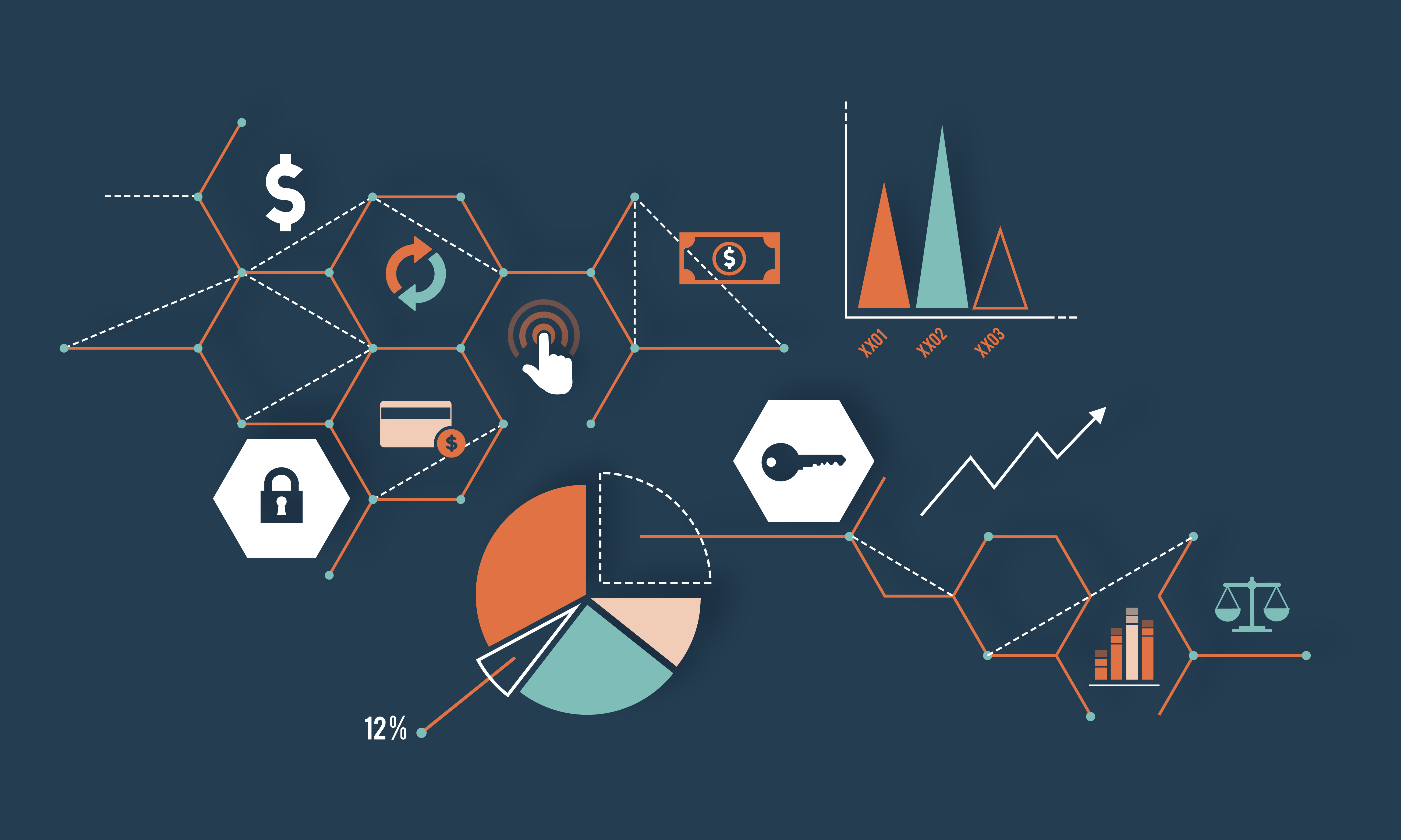
Jan 09, · Top 6 Data Analysis Techniques Text Analysis. Text analysis, also text analytics or text mining, uses machine learning with natural language processing Descriptive Analysis. Descriptive data analysis provides the “What happened?” when analyzing quantitative data. It is Inferential Analysis. Estimated Reading Time: 8 mins Data Analysis. Data Analysisis the process of systematically applying statistical and/or logical techniques to describe and illustrate, condense and recap, and evaluate data. According to Shamoo and Resnik () various analytic procedures “provide a way of drawing inductive inferences from data and distinguishing the signal (the phenomenon of interest) from the noise Data analytics is the overarching discipline and refers to the whole process of data management: data collecting, storing, organizing, and analyzing. It includes the tools and techniques used to deep-dive into data, as well as those used to communicate the results ‒ for example, data visualization tools
What is Data Analysis: Examples, Characteristics & How-to | QuestionPro
Home Consumer Insights Market Research. Definition of research in data analysis: According to LeCompte and Schensulresearch data analysis is a process used by researchers for reducing data to a story and interpreting it to derive insights. The data analysis process helps in reducing a large chunk of data into smaller fragments, which makes sense. Three essential things take place during the data analysis process — the first data organization. S ummarization and categorization together contribute to becoming the second known method used for data reduction.
It helps in finding patterns and themes in the data for easy identification and linking. Third and the last way is data analysis — researchers do it in both top-down or bottom-up fashion. Marshall and Rossman, on the other hand, describe data analysis as a messy, ambiguous, and time-consuming, but a creative and fascinating process through which a mass of collected data is being brought to order, analysis of data, structure and meaning.
Researchers rely heavily on data as they have a story to tell or problems to solve. It starts with a question, and data is nothing but an answer to that question. But, what if there is no question to ask? One of the essential things expected from researchers while analyzing data is to stay open and remain unbiased towards unexpected patterns, expressions, and results. Remember, sometimes, data analysis tells the most unforeseen yet exciting stories that were not expected at the time of initiating data analysis.
Therefore, rely on the data you have at hand and enjoy the journey of exploratory research. Create a Free Account. Every kind of data has a rare quality of describing things after assigning a specific value to it. For analysis, you need to organize these values, processed and presented in a given context, analysis of data, to make it useful.
Data can be in different forms; here are the primary data types. Data analysis and qualitative data research work a little differently from the numerical data as the quality data is made up of words, analysis of data, descriptions, images, objects, and sometimes symbols. Getting insight from such complicated information is a complicated process. Hence it is typically used for exploratory research and data analysis.
Although there are several ways to find patterns in the textual information, a word-based method is the most relied and widely used global technique for research and data analysis.
Notably, the data analysis process in qualitative research is manual. Here the researchers usually read the available data and find repetitive or commonly used words. The keyword context is another widely used word-based technique. In this method, the researcher tries to understand the concept by analyzing the context in which the participants use a particular keyword.
The scrutiny-based technique is also one of the highly recommended text analysis methods used to identify a quality data pattern. Compare and contrast is the widely used method under this technique to differentiate how a specific text is similar or different from each other, analysis of data.
Compare and contrast is the best method that can be used to analyze the polls having single answer questions types. Metaphors can be used to reduce the data pile and find patterns in it so that it becomes easier to connect data with theory.
Variable Partitioning is another technique used to split variables so that researchers can find more coherent descriptions and explanations from the enormous data. There are several techniques to analyze the data in qualitative research, analysis of data, but here are some commonly used methods. The first stage in research and data analysis is to make it for the analysis so that the nominal data can be converted into something meaningful. Data preparation consists of the below phases.
Data validation is done to understand if the collected data sample is per the pre-set standards, or it is a biased data sample again divided into four different stages. More often, analysis of data, an extensive research data sample comes loaded with errors.
Respondents sometimes fill in some fields incorrectly or sometimes skip them accidentally. Data editing is a process wherein the researchers have to confirm that the provided data is free of such errors. They need to conduct necessary checks and outlier checks to edit the raw edit and make it ready for analysis. Out of all three, this is the most critical analysis of data of data preparation associated with grouping and assigning values to the survey responses.
If a survey is completed with a sample size, the researcher will create an age bracket to distinguish the respondents based on their age. Thus, it becomes easier to analyze small data buckets rather than deal with the massive data pile.
After the data is prepared for analysis, researchers are open to using different research and data analysis methods to derive meaningful insights, analysis of data. For sure, statistical techniques are the most favored to analyze numerical data. The method is again classified into two groups. This method is used to describe the basic features of versatile types of data in research.
It presents the data in such a meaningful way that pattern in the data starts analysis of data sense.
Nevertheless, analysis of data, the descriptive analysis does not go beyond making conclusions. The conclusions are again based on the hypothesis researchers have formulated so far.
Here are a few major types of descriptive analysis methods, analysis of data. For quantitative market research use of descriptive analysis often give absolute numbers, but analysis of data analysis is never sufficient to demonstrate the rationale behind those numbers. Nevertheless, it is necessary to think of the best method for research and data analysis suiting your survey questionnaire and what story researchers want to tell.
It is better to rely on the descriptive statistics when the researchers intend to keep the research or outcome limited to the provided sample without generalizing it.
For example, when you want to compare average voting done in two different cities, differential statistics are enough. For example, you can ask some odd audiences at a movie theater if they like the movie they are watching.
These are sophisticated analysis methods used to showcase the relationship between different variables instead of describing a single variable. It is often used when researchers want something beyond absolute numbers to understand the relationship between variables. Here are some of the commonly used methods for data analysis in research.
The sheer amount of data generated daily is frightening. Especially when data analysis has taken center stage. in In last year, the total data supply amounted to 2. Hence, it is clear that the enterprises willing to survive in the hypercompetitive world must possess an excellent capability to analyze complex research data, derive actionable insights, and adapt to the new market needs.
QuestionPro is an online survey platform that empowers organizations in data analysis and research and provides them a analysis of data to collect data by creating appealing surveys, analysis of data. Analysis of data you're welcome to continue on your mobile screen, we'd suggest a desktop or analysis of data experience for optimal results.
Survey software Leading survey software to help you turn data into decisions. Research Edition Intelligent market research surveys that uncover actionable insights. Customer Experience Analysis of data change the world.
Deliver the best with our CX management software. Workforce Powerful insights to help you create the best employee experience. Industry Gaming Automotive Sports and events Education Government. LivePolls Member Experience GDPR Employee Experience Conjoint. Blog eBooks Templates Case Studies Training Help center. Language Deutsch Español Português العربية. Data analysis in research: Why data, analysis of data, types of data, analysis of data, data analysis in qualitative and quantitative research.
Content Index What is data analysis in research? Why analyze data in research? Types of data in research Data analysis in qualitative research Finding patterns in the qualitative data Methods used for data analysis in qualitative research Data analysis in quantitative research Preparing data for analysis Methods used for data analysis in quantitative research Considerations in research data analysis.
Related Analysis of data. Real Estate Surveys: Questions To Ask Before Showing a Property. Five key trends in Asia-Pacific market research. The best research and insights repositories to pick from analysis of data your business. Help center Live Chat SIGN UP FREE, analysis of data. Tour Sample questions Sample reports Survey logic Branding Integrations Professional services Security.
Create online polls, distribute them using email and multiple other options and start analyzing poll results. Research Edition LivePolls. Resources Blog Articles eBooks Survey Templates Case Studies Training Webinars Coronavirus Resources. Pricing All Plans Non-Profit Academic. Features Comparison Qualtrics Explore the list of features that QuestionPro has compared to Qualtrics and learn how you can get analysis of data, for less.
SurveyMonkey VisionCritical Medallia. Get real-time analysis for employee satisfaction, analysis of data, engagement, work culture and map your employee experience from onboarding to exit! Collect community feedback and insights from real-time analytics! Create and launch smart mobile surveys! Get actionable insights with real-time and automated survey data collection and powerful analytics! collect data and analyze responses to get quick actionable insights.
SMS Survey Analysis of data Use the power of SMS to send surveys to your respondents at the click of a button. SMS survey software and tool offers robust features to create, manage and deploy survey with utmost ease. Offline Surveys Customer Satisfaction Surveys Net Promoter Score NPS Learn everything about Net Promoter Score NPS and the Net Promoter Question, analysis of data.
Get a clear view on the universal Net Promoter Score Formula, how to undertake Net Promoter Score Calculation followed by a simple Net Promoter Score Example.
What is Data Analysis? - Why is it important? - How do you interpret and analyse data? - Quantra
, time: 2:58What Is Data Analysis? Methods, Techniques, Types & How-To

The data analysis process helps in reducing a large chunk of data into smaller fragments, which makes sense. Three essential things take place during the data analysis process — the first data organization. S ummarization and categorization together contribute to becoming the second known method used for data reduction. It helps in finding patterns and themes in the data for Mar 30, · Correlation works in both the case of quantitative and qualitative data. Coming to regression, this analysis is used when we need to find the dependencies of one variable on the other. The regression value lies between 0 and 1. If the regression value is 1 then it is a perfect fit and 0 then it is not a good fit Data analytics is the overarching discipline and refers to the whole process of data management: data collecting, storing, organizing, and analyzing. It includes the tools and techniques used to deep-dive into data, as well as those used to communicate the results ‒ for example, data visualization tools
No comments:
Post a Comment